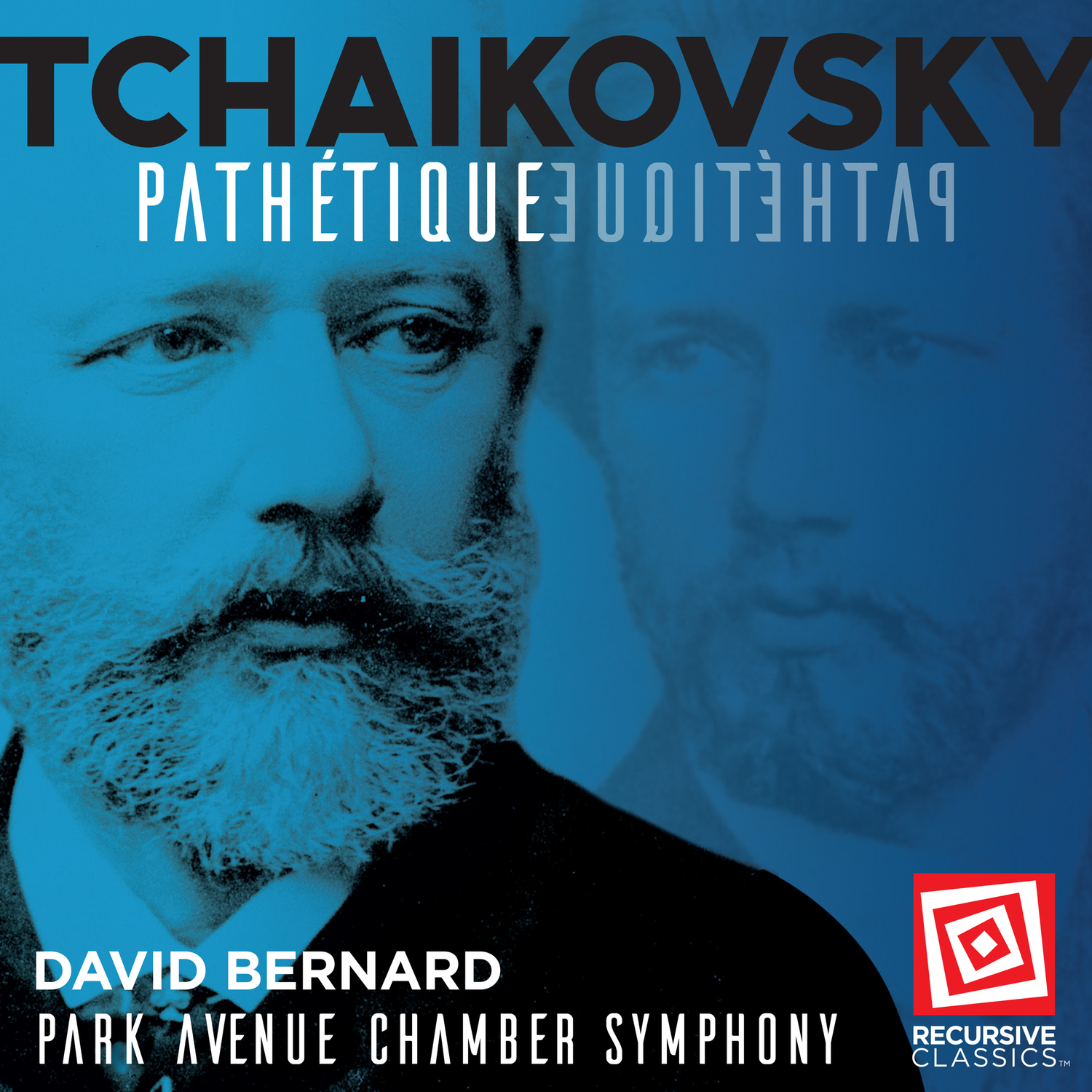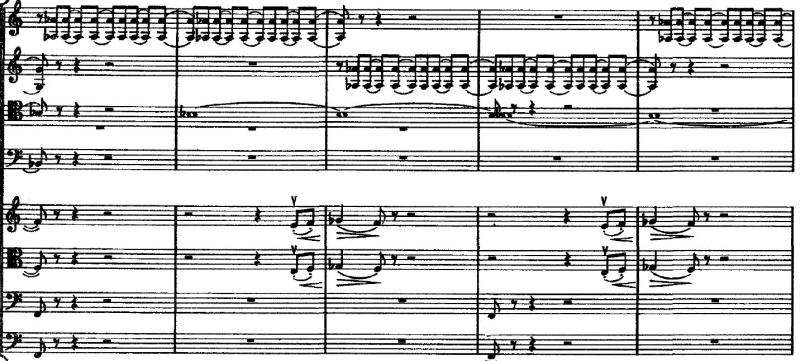Review: TCHAIKOWSKI 6TH SYMPHONY by The Park Avenue Chamber Symphony

Tchaikowsky's Sixth ('Pathetique')
PARK AVENUE CHAMBER SYMPHONY
Tchaikovsky's final symphony might be about death, but it's the work he called 'the best thing I have composed' and it is a supremely passionate, bright and energetic piece.
The Sixth Symphony is a vindication of Tchaikovsky's powers as a composer - a work that represented a return to the heights of his achievement as a composer, and away from the lovely but often superficial, and somewhat written-by-numbers populism of his ballets (although I sense Maestro Bernard may take me to task on that!) The 6th brought the composer a deep, personal satisfaction that he clearly had not experienced in many years.
David Bernard's Park Avenue Chamber Symphony has just released a new recording of the symphony and BWW Classical sat down with Maestro Bernard to discuss the new disc.
BWW: First of all congratulations on an altogether wonderful new disc. Let's start at the begin: why the 6th?
"Tchaikovsky poured his soul into the Pathétique, with a musical language that not only conveys, but compels you to feel Tchaikovsky's emotional transformations throughout the score, at its end leaving you drained from the empathy the work demands. The visceral connection between performers and listeners created by the Pathétique is exhilarating for me. There is nothing like it."
BWW: Critic Robert Simpson aptly observed, "No other work has survived so many critical burials." Yet the work's immense popular appeal over one hundred years after its premier stands as testimony. Why do you think the work had such a difficult birth and early life?
"The mythology surrounding Tchaikovsky's Pathétique that has captivated the public to this day was the direct result of the composer himself. When talking about the underlying meaning behind his sixth symphony, Tchaikovsky teased his public-proclaiming the work indeed had an embedded program, but he would keep it secret. This, along with his death occurring just after the Pathétique's premiere, and just before he would have been able to reveal the work's program, formed a perfect storm of mystery and intrigue. We've seen this before---the combination of mystery and secrecy with a composer's death piques public interest, and in turn box office receipts. In the case of Mozart's "Requiem", the circumstances around the commissioning of the work was kept secret as a requirement by the commissioner (Count Walsegg) who wanted to pass it off as his own. Mozart died after only barely getting started, requiring other composers to finish the work to complete the commission and allow his widow Constanze to be paid. After Mozart's death, Constanze widened the deception, first by providing assurances that Mozart completed the Requiem himself to receive payment for the project, and then publicly promoting the notion that Mozart completed his Requiem in its entirety for himself on his deathbed after having been poisoned-a narrative that increased the popularity of the Requiem and allowed Constanze to claim ownership and secure income from publication and performance. Then we have the case of Sir Edward Elgar, who, perhaps inspired by the aura that formed around Tchaikovsky's Pathétique, engineered a similar mysterious undercurrent to his Variations on an Original Theme, copying Tchaikovsky's approach--announcing that the unifying force behind the entire work was an underlying theme that never appears in the work, which he refused to disclose to his dying day. The resulting mystery surrounding the work not only increased its popularity, but as with Tchaikovsky's Pathetique, has driven an intense ongoing debate.
Mystery and intrigue sells, especially when the death of the composer is involved. It is also clear that when secrecy around the meaning of a work is permitted to linger, the void is filled by an imaginative public with, shall we say, alternative facts.
In the case of the Pathétique, the ambiguity left by the composer at his death left space for an imaginative public to construct their own theories for the meaning of the Pathétique, with some proclaiming this was his suicide note."
BWW: What challenges did the work provide for you in prep and performance?
"The biggest challenge in a work so well known is to first see past the widely accepted mythology and develop an interpretation that is genuine and authentic, and then to bring this vision for the work to life in partnership with the musicians of the orchestra.
I have never bought the suicide note theory for the Pathétique. The work's immense scale and relentless passion is clearly the product of a life force in the composer that simply could not exist inside a person resigned to take his own life. And it isn't even a foregone conclusion that Tchaikovsky committed suicide in the first place.
My view of the Pathétique began to take hold as I was considering this moment in the development section of the first movement:

 The distinctive rhythm in the horns (shown here on the top two lines in this excerpt) struck me as an important feature. That Tchaikovsky waits until this particular moment in the development section to introduce this rhythm as an offset to foreshortened development of the primary theme is unusual on its own, but even more intriguing is the possibility that using this rhythm, Tchaikovsky is quoting almost exactly (offset by one beat) the "heart beat" rhythm of Strauss Death and Transfiguration-a tone poem that depicts a dying man remembering his life, from his childhood through adulthood, and then, after dying, achieving heavenly transfiguration.
The distinctive rhythm in the horns (shown here on the top two lines in this excerpt) struck me as an important feature. That Tchaikovsky waits until this particular moment in the development section to introduce this rhythm as an offset to foreshortened development of the primary theme is unusual on its own, but even more intriguing is the possibility that using this rhythm, Tchaikovsky is quoting almost exactly (offset by one beat) the "heart beat" rhythm of Strauss Death and Transfiguration-a tone poem that depicts a dying man remembering his life, from his childhood through adulthood, and then, after dying, achieving heavenly transfiguration.
Death and Transfiguration premiered roughly three years before Tchaikovsky completed his Pathétique, and while there is no direct evidence that Tchaikovsky knew of the Strauss's tone poem, the use of this distinctive rhythm seemed as much more than a mere coincidence, and helps us see the Pathétique in a new light. If one lets the music speak for itself, through the first three movements, rather than a suicide note forcing anguish at each opportunity, we hear Tchaikovsky looking back, shedding the boundaries of artistic oppression he felt so strongly throughout his life, literally soaring without limits delivering his most inspired, passionate, graceful and blindingly brilliant music he has ever written. When we reach the fourth movement, we meet Tchaikovsky in the present, at the end of his life. We feel the anguish and regret for not having said what he wanted to say, the elation he felt writing free of limits, and finally, the elation turning to acceptance and then to anguish with the realization he has run out of time to say more in this unrestricted voice. The fourth movement IS the symphony---where entire program is revealed, and Tchaikovsky's true voice is heard."
BWW: Let's have some fun and briefly go through the work, movement by movement and give us your thoughts! The 1st movement. The first movement sticks to a traditional symphonic sonata form, what makes it so special? Other than the remarkable notation of "PPPPPP" just prior to the final section?
"In the first movement of the Pathétique, we hear Tchaikovsky reimagining his popular Romeo and Juliet Fantasy Overture, taking us on a wild ride with music that is as exciting as it is alluring. The relationship between this music and Romeo and Juliet is unmistakable, from surface similarities (they are both in b minor and they both feature a famed and beloved lyrical theme) to sharing a structural DNA - both suddenly launching into relentlessly driven episodes that lead through a passionate retelling of the lyrical theme with an epilogue through which the narrative's energy is released. Yet as beautiful as Romeo and Juliet is, the first movement of Pathétique seems more spontaneous and genuine, as though it were driven by a single lightning bolt of inspiration. As it turns out Tchaikovsky wrote the first movement of the Pathétique in five days in one continuous stream of consciousness, compared to the arduous and protracted eleven-year process of writing Romeo and Juliet during which time Tchaikovsky was berated at the hands of his mentor Balakirev. The Pathétique is far more captivating and organically brilliant as a result."
BWW: The 2nd Movement. Let's talk time. 5/4? Who did he think he was? Dave Brubeck?
"Yes it is in 5/4, but the first thought than comes to mind is that it is a waltz! Tchaikovsky wrote many wonderful waltzes, and may very well have been known as "The Waltz King" had Johann Strauss (ii) not been given that title first. Tchaikovsky's waltzes seem to continually strive to take flight-to lift, glide and soar. You can hear this in his ballets, especially each of the waltzes in the Nutcracker, yet at the same time you can hear Tchaikovsky hitting the limit of the form.
In composing the second movement, Tchaikovsky not only reimagined his ballet waltzes, but also innovated on the waltz by expanding of each measure by two quarter notes-starting and ending each measure with a lift. This brings a lightness and gracefulness to this music, allowing the theme to glide forward with an effortlessness that eludes most traditional waltzes.
This is an example of where the seeing the Pathétique as a suicide note detracts rather than elucidates the work. Attempting to overlay a sense of anguish on the second movement invariably results in a slower tempo, emphasizing the quarter note pulse in 5 over the lightness at the ends of each measure."
BWW: The 3rd Movement: The most famous march theme in all classical music. But wait! There's more!
"Audiences often burst into applauds at that point, requiring a bit of time to quiet and prepare the room before starting the fourth movement. And yes, the third movement does sound like a finale. This is Tchaikovsky reimagining his symphonic finales from his fourth and fifth symphonies. As with the first movement, the finale of the Pathétique seems more directed and genuine than his earlier examples. Here Tchaikovsky brings an unceasing energy that drives relentlessly to an ending that is as inevitable as it is exciting."
BWW: The 4th: Composer Arnold Schoenberg said of the finale "it starts with a cry and ends with a moan." Revolutionary, visionary - a slow movement for a conclusion???
"Considering the narrative flow of Tchaikovsky reimagining his past, and then reconciling his past with his present as his "Transfiguration", the ending is absolutely perfect. Life does not end with a triumphant bang, but an introspective whisper-and a listener fully connected to the Pathétique would not be satisfied ending with the Third Movement. The Finale conveys Tchaikovsky's growing awareness of his mortality-portraying his emotional transformation through riveting chromaticism. It is here where the entire program of the Pathétique comes into focus gradually, note-by-note, with us-and Tchaikovsky-achieving closure in the silence that follows. This isn't a suicide note. Here Tchaikovsky coming to terms with his mortality at the same moment he has found his voice. The ending unfolds through a profoundly moving combination of emotions that is unforgettable."
BWW Classical wishes to thank Maestro Bernard for taking the time to chat with us and we strongly reccommend that our readers check out their new disc.
Peter Danish
Classical Editor
Videos
